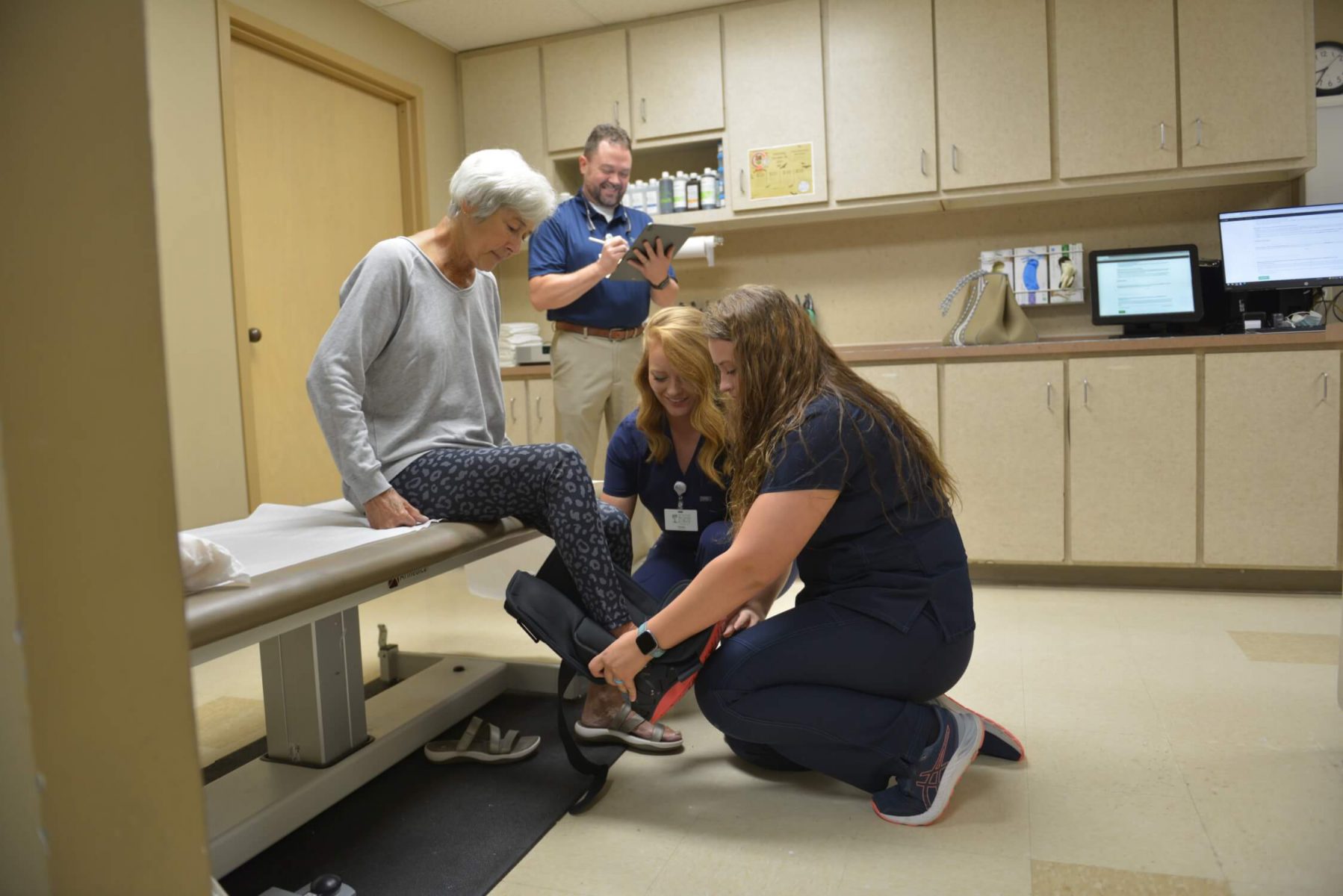Cast and splint care can be an important part of your healing following an injury or surgical procedure. At West Tennessee Bone & Joint Institute, the dedicated team of orthopedic specialists offers comprehensive cast and splint care, from initial application to removal and aftercare.
How are splints and casts different?
A cast has a rigid plaster or fiberglass exterior. It fully encases an injured bone. A splint is more of a half-cast. It includes a rigid part, which covers the front of the injured bone, and a flexible part (usually an elastic bandage) that holds it in place.
Often, you start with a splint when you’re injured. After the swelling recedes, you may need a cast to help your bone heal properly.
Sometimes you may need to change from a cast to a splint. For example, once your fracture is healing, you might transition from a cast to a splint to allow for a better range of motion during physical therapy.
When do I need cast and splint care?
The orthopedic team at West Tennessee Bone & Joint Institute may apply a splint or cast after you break a bone or have some other type of injury.
Sometimes, you may need a cast after surgery as well. Casts and splints immobilize your injury and protect your healing body while easing pain, reducing swelling, and deterring muscle spasms.
What is the process for cast or splint application?
Your care provider at West Tennessee Bone & Joint Institute applies a synthetic or cotton material and applies it to your skin. This gives you protection and cushioning.
Next, the provider soaks the casting or splinting material in water and applies it over the protective layer. Usually, your provider covers the area of the injury and a small area both above and below it. Covering the joints on either end of the broken bone maximizes stability and fit.
How does cast and splint care work at home?
The West Tennessee Bone & Joint Institute team gives you specific advice, so follow their directions carefully for optimal healing. Some general guidelines include:
- Keeping your cast or splint dry
- Raising your casted arm or leg above your heart frequently to ease swelling
- Blowing cool air into the cast for itchiness
- Not trying to remove or otherwise modify your splint or cast
- Using ice packs for pain
If you develop new issues, like severe pain, numbness, tingling, burning, stinging, cramps, or drainage from the cast or splint, don’t delay in calling your doctor for guidance.
You can trust the West Tennessee Bone & Joint Institute team for the best in comprehensive orthopedic care, so call the office nearest you or use online scheduling for help now.

